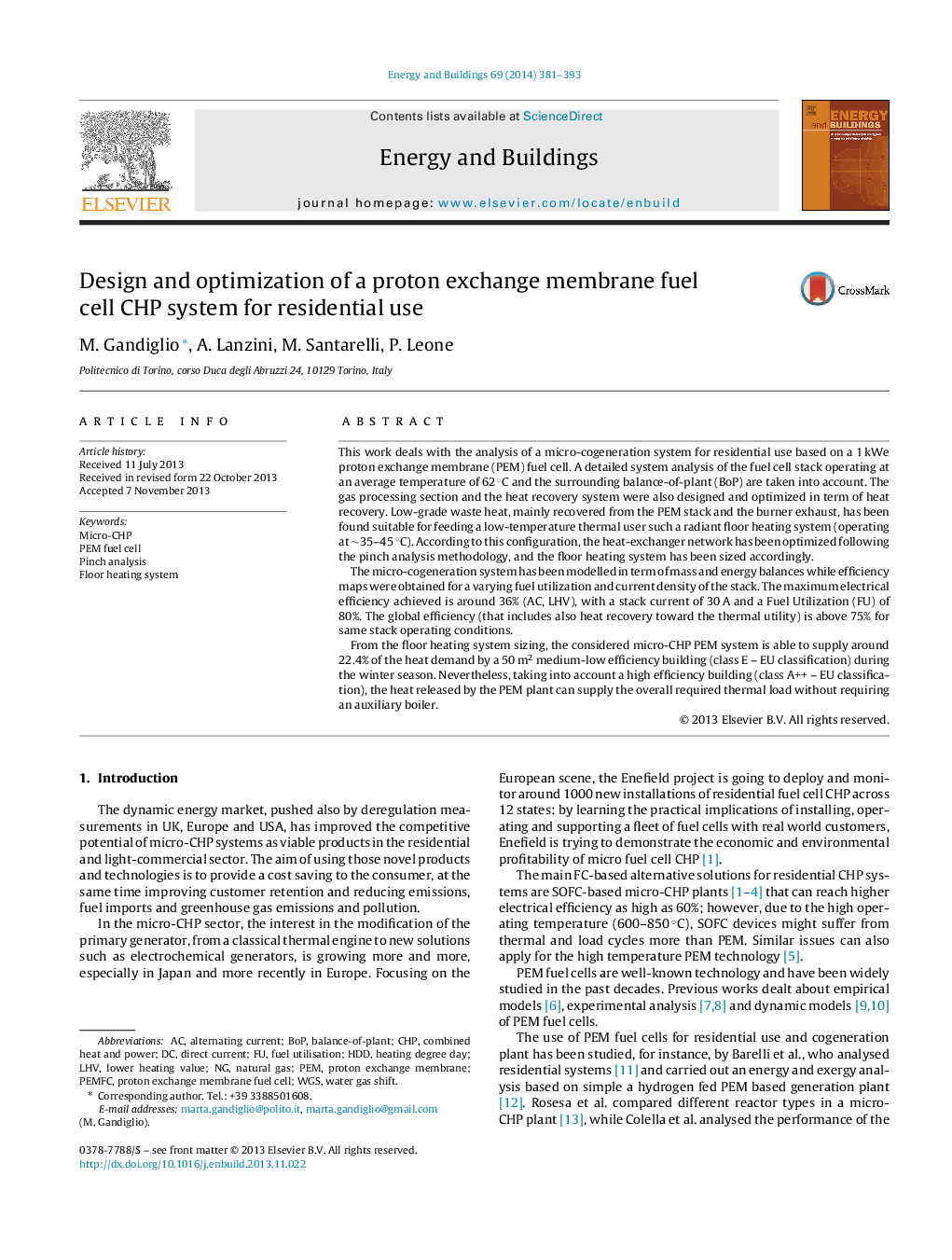| Article ID | Journal | Published Year | Pages | File Type |
|---|---|---|---|---|
| 263160 | Energy and Buildings | 2014 | 13 Pages |
•The best CHP configuration is PEM fuel cell coupled with floor heating systems.•The above configuration leads to global efficiency (thermal + electrical) higher than 80%.•Traditional configurations with radiators bring to a global efficiency of only 43%.•In ‘A++’ rated dwellings, the suggested PEM configuration covers up to 100% of the household thermal demand.
This work deals with the analysis of a micro-cogeneration system for residential use based on a 1 kWe proton exchange membrane (PEM) fuel cell. A detailed system analysis of the fuel cell stack operating at an average temperature of 62 °C and the surrounding balance-of-plant (BoP) are taken into account. The gas processing section and the heat recovery system were also designed and optimized in term of heat recovery. Low-grade waste heat, mainly recovered from the PEM stack and the burner exhaust, has been found suitable for feeding a low-temperature thermal user such a radiant floor heating system (operating at ∼35–45 °C). According to this configuration, the heat-exchanger network has been optimized following the pinch analysis methodology, and the floor heating system has been sized accordingly.The micro-cogeneration system has been modelled in term of mass and energy balances while efficiency maps were obtained for a varying fuel utilization and current density of the stack. The maximum electrical efficiency achieved is around 36% (AC, LHV), with a stack current of 30 A and a Fuel Utilization (FU) of 80%. The global efficiency (that includes also heat recovery toward the thermal utility) is above 75% for same stack operating conditions.From the floor heating system sizing, the considered micro-CHP PEM system is able to supply around 22.4% of the heat demand by a 50 m2 medium-low efficiency building (class E – EU classification) during the winter season. Nevertheless, taking into account a high efficiency building (class A++ – EU classification), the heat released by the PEM plant can supply the overall required thermal load without requiring an auxiliary boiler.
